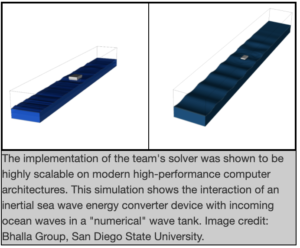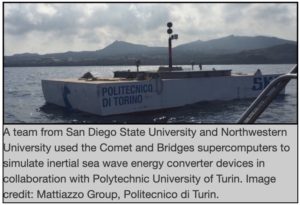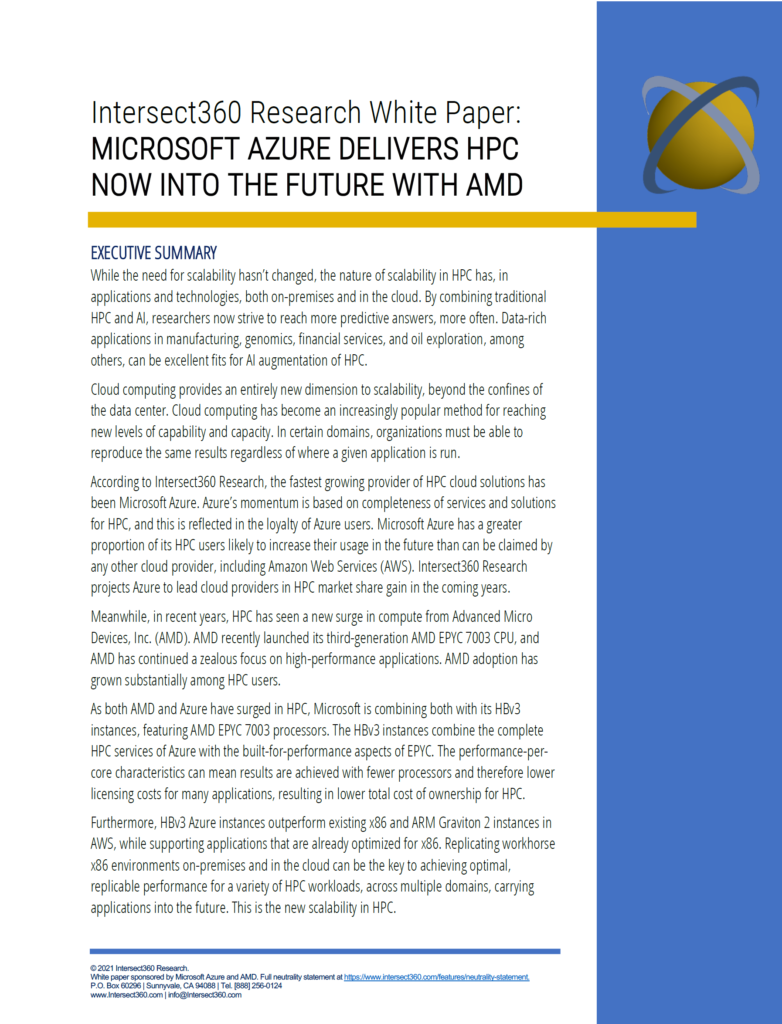Researchers are using XSEDE supercomputers to help develop ocean waves into a sustainable energy source.
 Although several challenges, such as operating complex devices in harsh ocean conditions, must be overcome before wave energy becomes a realistic option for mainstream power, one step toward a solution was recently studied and validated by an international team of engineering researchers with support from XSEDE. The team published the results related to their wave energy simulation tool in the December 2019 issue of Journal of Computational Physics, with the findings validated using Comet at the San Diego Supercomputer Center (SDSC) and Bridges at the Pittsburgh Supercomputing Center (PSC).
Although several challenges, such as operating complex devices in harsh ocean conditions, must be overcome before wave energy becomes a realistic option for mainstream power, one step toward a solution was recently studied and validated by an international team of engineering researchers with support from XSEDE. The team published the results related to their wave energy simulation tool in the December 2019 issue of Journal of Computational Physics, with the findings validated using Comet at the San Diego Supercomputer Center (SDSC) and Bridges at the Pittsburgh Supercomputing Center (PSC).
Focused on modeling complex fluid-structure interaction problems, the research team’s study encompassed simulations such as heavy rigid structures interacting with high winds, breaking waves, and other complex marine characteristics.
We primarily used our simulation techniques to investigate inertial sea wave energy converters, which are renewable energy devices developed by our collaborators at the Polytechnic University of Turin that convert wave energy from large bodies of water into electrical energy,” explained study co-author Amneet Pal Bhalla, an assistant professor of mechanical engineering at San Diego State University (SDSU). “There is a need for these devices to perform effectively year-round using optimal control strategies, and our simulations could be an initial step in making this happen.”
Because wave energy converter engineering is still in the research and development phase, such simulations allowed the scientists to show how their models could allow engineers to inexpensively investigate their design space before building full-scale prototypes.
 Some large-scale modeling challenges were also encountered by the researchers while conducting their study. For instance, they had access to SDSU College of Engineering’s cluster called Fermi, however, it was not suitable to evaluate the parallel scalability of the code and tune its performance for modern computer architectures. Meanwhile, the XSEDE clusters offered a large number of homogeneous nodes with modern architecture, along with specialized code analytics and performance tuning software such as TAU, DDT, Valgrind, and Massif.
Some large-scale modeling challenges were also encountered by the researchers while conducting their study. For instance, they had access to SDSU College of Engineering’s cluster called Fermi, however, it was not suitable to evaluate the parallel scalability of the code and tune its performance for modern computer architectures. Meanwhile, the XSEDE clusters offered a large number of homogeneous nodes with modern architecture, along with specialized code analytics and performance tuning software such as TAU, DDT, Valgrind, and Massif.
The XSEDE clusters also allowed us to detect hotspots (such as unnecessary MPI barriers), check for memory leaks, and monitor call instructions in routines; these tools helped us to profile and optimize our code, which uses several high-performance libraries such as OpenMPI, PETSc, and HDF5. Furthermore, these libraries were readily available on these supercomputers and optimized for their modern architectures.” said Bhalla. “These resources saved us time and allowed us to focus on answering our research questions. Our students also became proficient high performance computing developers by attending various XSEDE training seminars.”
While this multifaceted work required hundreds of processors and multiple days of runtime, computational resources on Comet and Bridges allowed the research team to demonstrate the parallel scalability of their simulation technique as well as validate various three-dimensional, large-scale test cases.
The supercomputers helped us demonstrate that our technique is robust and can be used for complex engineering problems,” said Bhalla. “We are extremely grateful for being able to push the boundaries of various simulation techniques to expand our research on engineering better converters for this untapped resource of wave energy.”
Source: Kim Bruch at the San Diego Supercomputer Center




